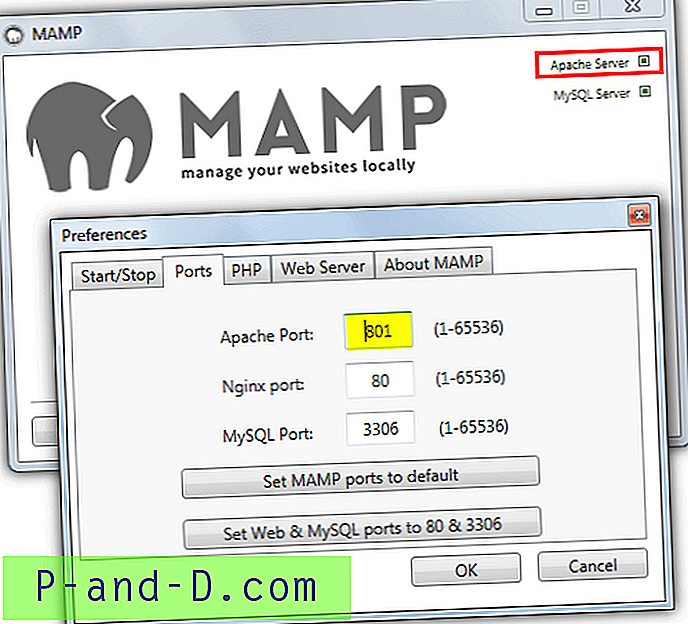

- #MAMP PRO PORT 80 APACHE CONFLICT INSTALL#
- #MAMP PRO PORT 80 APACHE CONFLICT CODE#
- #MAMP PRO PORT 80 APACHE CONFLICT FREE#
#MAMP PRO PORT 80 APACHE CONFLICT INSTALL#
Install MySQL with Homebrew: brew install -v mysqlĬopy the default my-default.cnf file to the MySQL Homebrew Cellar directory where it will be loaded on application start: cp -v $(brew -prefix mysql)/support-files/my-default.cnf $(brew -prefix)/etc/my.cnf If you installed Homebrew to a custom location, or are not seeing /usr/local/bin at the beginning of your shell’s $PATH, check out the file /etc/paths or the directory /etc/paths.d/. Thankfully, Yosemite’s $PATH order is different than earlier OS versions and now includes the default Homebrew location of /usr/local/bin in front. In previous guides on 10.9 and earlier, I added a change to $PATH in ~/.bash_profile to ensure that Homebrew-installed applications would run by default over similar ones that were already installed on OS X.

#MAMP PRO PORT 80 APACHE CONFLICT FREE#
If you do not have git available on your system, either from Homebrew, Xcode, or another source, you can install it with Homebrew now (if you already have it installed, feel free to skip this step to keep the version of git you already have): brew install -v git I used to include the command in previous walkthrough blogs, but it could change after posting, so definitely check their website to install it properly. If you’ve not already installed Homebrew, you can follow the instructions at. You can do it faster and pay money for something like MAMP Pro, but this is more fun, and you may learn something along the way! And, while you can simplify things with Vagrant or other virtual machine format, some people prefer to run things on “bare metal” and not have the overhead of a virtual machine.
#MAMP PRO PORT 80 APACHE CONFLICT CODE#
This means you should copy and paste each code block in its entirety as a single command.īefore diving in, yes, this is a lot of steps. We’ll configure PHP and MySQL to allow for enough flexibility for development.īecause some of the commands span several lines, each command will be in a separate code block. If that fails, leave a comment and I’ll try my best to help you out.Īt the conclusion of this guide, you’ll be able to create a directory like ~/Sites/project and access it immediately at without editing your /etc/hosts file or editing any Apache configuration. If you have attempted to install a similar stack and run into conflicts, or you’ve upgraded your operating system from 10.9 and things broke, the final section has some troubleshooting pointers.

The following steps are intended for use on a Yosemite system without any previous attempts to use Homebrew for Apache, PHP, or MySQL. Finally, we’ll add a firewall rule to allow the default http port 80 to be used without running Apache as root. We’ll also use DNSMasq and Apache’s VirtualDocumentRoot to set up “auto-VirtualHosts” so you don’t need to edit configuration files when starting new projects. This guide will walk you through using Homebrew to install Apache, PHP, and MySQL for a “MAMP” development environment. With the arrival of Yosemite, some of the changes previously used in 10.9 for setting up Apache, PHP, and MySQL with Homebrew don’t work quite the same. We can also set things up to be fully automatic so you can create new websites locally without needing to edit any configuration files. We prefer to use Homebrew to avoid these problems and because it’s easier to keep up to date with newer versions of each component and extend customization. OS X 10.10 Yosemite comes with Apache and PHP pre-installed, but it’s not in a great configuration, requires root to make lots of changes, and can introduce issues with file ownership and permissions.


 0 kommentar(er)
0 kommentar(er)
